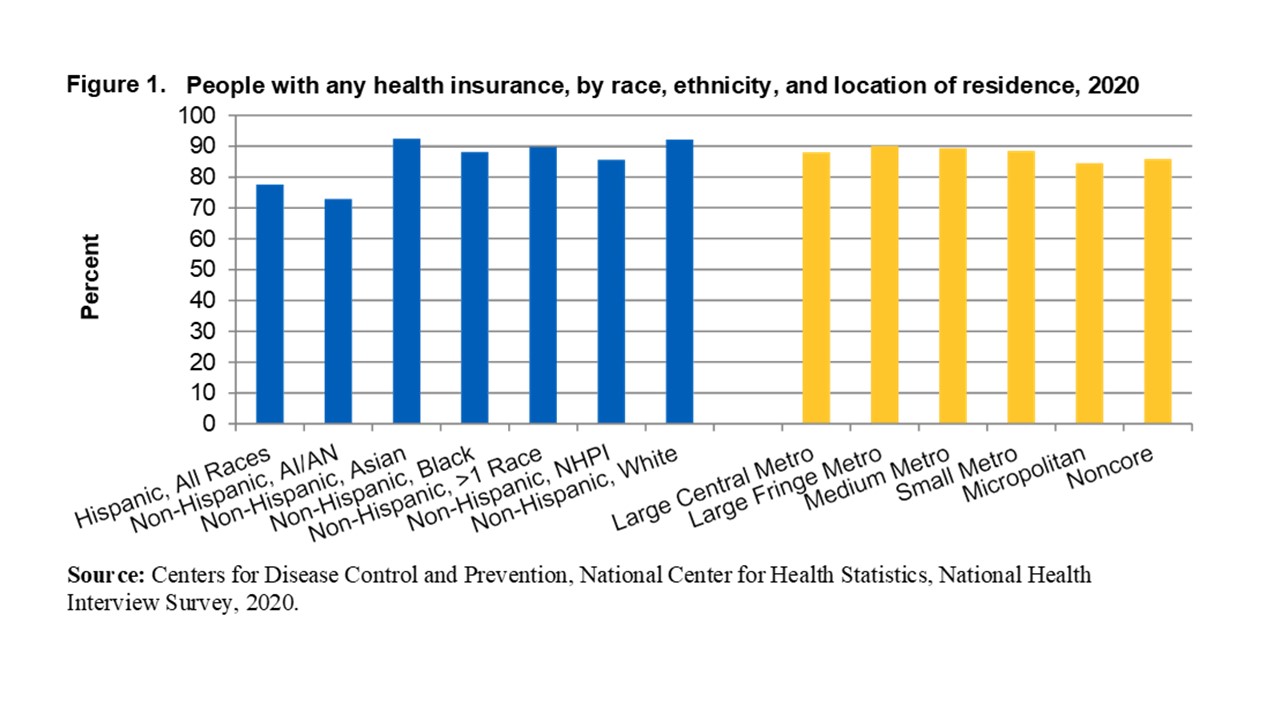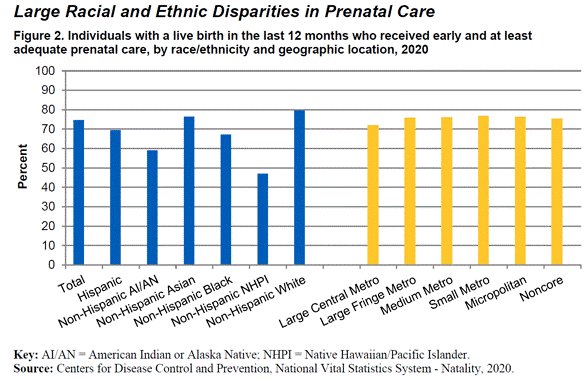Brandview World

Jun
Appropriate Use of AI
jerry9789 0 comments artificial intelligence, Brand Surveys and Testing, Brandview World, Burning Questions
The Rise Of AI
Believe it or not, Artificial Intelligence has existed for more than 50 years. But as the European Parliament pointed out, it wasn’t until recent advances in computing power, algorithm and data availability accelerated breakthroughs in AI technologies in modern times. 2022 alone made AI relatively mainstream with the sudden popularity of OpenAI’s ChatGPT.
But that’s not to say that AI hasn’t already been incorporated in our daily lives- from web searches to online shopping and advertising, from digital assistants on your smartphones to self-driving vehicles, from cybersecurity to the fight against disinformation on social media, AI-powered applications have been employed to enable automation and increase productivity.
The Woes Of AI
However, the rise of AI also brings concerns and worries over its expanding use across industries and day-to-day activities. Perceived negative socio-political effects, the threat of AI-powered processes taking over human employment, the advent of intelligent machines capable of evolving past their programming and human supervision- that last one is mostly inspired by the realm of science fiction but a plausible possibility nonetheless. A more grounded and present-day concern, however, is the overreliance and misuse of Artificial Intelligence.
Copyright geralt (Pixabay)
Sure, AI is able to perform a variety of simple and complex tasks by simulating human intelligence, efficiently and quickly producing objective and accurate results. However, there are some activities requiring discernment, abstraction and creativity, where AI’s approximation of human thinking falls short. Cognitive exercises like these not only need high-level thinking but also involve value judgments honed and subjected by human experience.
The Expedia Group Case Study
This brings us to our case study for the Expedia Group, whose brand has around a million hospitality partners. Their goal is to increase engagement with their partners. For five years, Expedia grouped their lodging partners, which at the time were mostly chain hotels, with a segmentation model that helped guide their partner sales teams on how they should prioritize spending their time. This “advice” Expedia provides comes through marketing, in-product or through the partner’s account manager. When a partner takes advantage of Expedia’s advice, they usually receive the booking over their competitor.
Copyright geralt (Pixabay)
Now you can imagine that Expedia has thousands of advices or recommendations to give their partners. So how does Expedia determine which recommendation will most likely push their partner to act accordingly and produce optimal revenue?
If you answered “Use AI,” you’re on the right track. With thousands of possible decisions, Expedia just wants AI to filter the bad choices and boil it down to a few but good recommendations optimizing revenue. Expedia wants to use AI to help with decisions, but it doesn’t want AI to make that decision for them or their partners.
Copyright Seanbatty (Pixabay)
But now things are different- Expedia’s partners have grown to also include independent hotels and vacation rentals. So what if Expedia adds additional dimensions to the model allowing them to target partners with recommendations that would be best for their way of thinking and feeling, as well as appeal to their primary motivations as a property?
So that’s exactly where Cascade Strategies stepped in. We followed a disciplined process where — just to name a few things we’ve performed — we interviewed 1200 partners and prospects across 10 countries in 4 regions, converted emotional factors into numeric values and used advanced forms of Machine Learning to arrive at optimal segmentation solutions. Through this five-step disciplined process, we built them a psychographic segmentation formed into subgroups based on patterns of thinking, feeling and perceiving to explain and predict behavior.
Copyright Pavel Danilyuk
It “conceived the game anew” for Expedia Group (in a way suggested by Eric Schmidt and company in their book The Age of AI: And Our Human Future). Now seeing their partners in a different light, they needed to evolve their communications to reflect the new way they view them with the end goal of targeting which segment with which offer. The messages they would deploy should be very action-oriented based on what compels each segment.
Cascade Strategies then created an application called Scenario Analyzer to make this easy for people at Expedia. Its users could just ask the Scenario Analyzer what’s the optimal decision for certain input conditions. Basically, a marketer selects a target group and a region then the Scenario Analyzer answers by saying “You could do any of these six things and you’d make some money. It’s your call.”
If the partner does nothing, Expedia still makes about $1.5 million from these partners during a 90-day period, which is part of their regular business momentum. However, if the partner acts on the top-ranked recommendation which carries the message “Maximize your revenue potential by driving more groups or corporate business to your property,” it would result in about $140,000 more during the same period, which is about a 1% gain. While we couldn’t reach all partners with the same message, causing us to lower our expectations a little, we did slightly better than we expected to do in the end.
The “Appropriate Use” of AI
So what did we did do? We made “Appropriate Use” of AI. It neither made the decision nor guaranteed the money. It warded off the worst ideas and told us which recommendation was best in comparative terms.
Many people in marketing are treating AI as the next cool thing, so they want to jam it in wherever they can, whether it’s helpful or not. “Appropriate Use” stands against that, saying the best way to apply AI to marketing is for Decision Support to remain under human discretion and judgment, instead of letting AI actually make choices.
We think AI can at times be a very poor decision maker but a very good advisor. And we’re not alone as many others share our concern; to illustrate, 61% of Europeans look favorably at AI and robots while 88% say these technologies require careful management.
Another example to consider when thinking about just how important human intervention is when it comes to the “Appropriate Use” of AI is the topic of health care. As noted by frontiersin.org, the legal and regulatory framework may not be well-developed for the practice of medicine and public health in some parts of the world. Throwing artificial intelligence into the mix without careful and thoughtful planning might underscore or aggravate existing health disparities among different demographic groups.
And this is part of the reason why we believe in shaping AI with human values, including the dignity and moral agency of humans. The “defining future technology” that is AI is already proving to be a powerful tool for providing solutions and achieving goals, but it can only unlock levels of excellence, innovation and integrity when guided appropriately by human values and experience.
Other interesting reads:
https://www.wgu.edu/blog/what-ai-technology-how-used2003.html#close
https://www.investopedia.com/terms/a/artificial-intelligence-ai.asp

Jun
How Great Research Produces Great Campaigns
jerry9789 0 comments artificial intelligence, Brand Surveys and Testing, Brandview World, Burning Questions
Can AI Produce Your Marketing Campaign?
If you were given the task of developing a global communications campaign for a technical products company, would you let ChatGPT do it?
 You might, especially if you noted that ChatGPT could churn out dozens of ads like the one above without paying art directors, copywriters, media professionals, or users of a Demand Side Platform.
You might, especially if you noted that ChatGPT could churn out dozens of ads like the one above without paying art directors, copywriters, media professionals, or users of a Demand Side Platform.
But we wouldn’t. This is because it’s hard for AI to produce at the level of excellence, and excellence is what should be sought.
Seeking Excellence in Marketing Campaigns
The ad below is part of an award-winning and profitable “Mentor” campaign for HP. To arrive at this level, HP had to commission very perceptive researchers to spend time with worldwide HP engineers as well as engineers from other companies.
The researchers stretched the intuitive, interpretive, and synthesis-building capacities of their right brains to arrive at a subtle insight that AI would have great difficulty seeing: that HP engineers showed greater qualities of “mentorship” than other engineers. They thought it was important not only to conduct their own technical work, but to impart to others (typically younger people) what they were doing and why what they were doing was important.
It would be very hard indeed to stretch an AI chatbot (or other AI engine) to that deeper level of understanding about what a truly extraordinary ad should do to express the true meaning of a brand to people.
An example from the world of sunglasses
If you were given the job of developing a campaign for a line of sunglasses, you could probably get ChatGPT to produce a large number of ads like the following at little or no cost (with the exception of the cost of the talent).
 But AI-produced ads fall short of excellence. AI simply cannot do the incisive interpretive work that humans can do to produce something better.
But AI-produced ads fall short of excellence. AI simply cannot do the incisive interpretive work that humans can do to produce something better.
Researchers working for the Gargoyles brand of sunglasses spent time with those who preferred this brand and made a discovery about them that AI engines would have great difficulty seeing: that many Gargoyles wearers were upward strivers who were at first destined to fail, then turned things around with drive, verve, and strenuous effort.
 They had a “storyline of life” worth admiring. To gain this insight, the researchers had to stretch the intuitive and interpretive powers of their brains. They could not simply rely on a summarization of prior human experience in producing ads about sunglasses.
They had a “storyline of life” worth admiring. To gain this insight, the researchers had to stretch the intuitive and interpretive powers of their brains. They could not simply rely on a summarization of prior human experience in producing ads about sunglasses.
Higher powers AI cannot reach
AI cannot stretch to this level of excellence. It cannot see broader levels of human experience that may be required to produce excellence, such as “how could sunglasses have anything to do with striving?” or “how could a life story of struggling ever be associated with sunglasses?” Hell, generative AI wouldn’t even think to inquire about a storyline of life. But humans can do that when their right brains are performing at a very high level.
The researchers in this case had to sweat the details a little more, spend quality time pondering the higher thematic levels, and drive their brains well beyond summarization to a more sublime expression of the true meaning of a brand to people.
This is the kind of work Cascade Strategies does on a daily basis. Please have a look at some other examples of higher thinking for clients at https://cascadestrategies.com.
People are catching on and speaking out
More people are seeing the chasm between the summarization of human experience that AI can provide and the excellence provided by the greater intuitive powers of the human brain, and they are speaking out about it. One example is Po-Shen Loh, a charismatic math coach who directly confronts AI, challenging his students to attack complex math problems at higher levels of understanding and interpretation than AI could ever provide.
But there are even more people who are discovering this excellence gap, and their voices will grow stronger.

Jun
How Great Research Helps Tech Companies
jerry9789 0 comments artificial intelligence, Brand Surveys and Testing, Brandview World, Burning Questions
How Well do you Understand Your Customers’ Needs?
As a Tech Company, how well do you know your customers? In most cases, identifying who has an affinity for your brand and focusing on the needs of that customer type can spell success for your products, especially the launch of your new offerings.
Sure, you might think you can have AI go over your customer database and hope it’s able to recognize customers and prospects most likely to purchase your product. However, AI shortcuts are unable to approach the intuitive and interpretive power of human thinking, let alone the kind performing at a high and excellent level.
The Story of HP Test & Measurement
The case of Hewlett Packard’s “Mentor” campaign is instructive. HP commissioned our researchers to spend quality time with worldwide HP engineers as well as engineers from other companies, learning about their daily lives – how they think, feel, and behave. The researchers stretched the intuitive, interpretive, and synthesis-building capacities of their right brains to arrive at a subtle insight that AI would have great difficulty seeing: that HP engineers showed greater qualities of “mentorship” than other engineers.
The result was a highly successful, award-winning global campaign. Conversion rates soared as HP logged higher equipment sales in virtually every world region. The campaign also produced significant financial gains for HP and won an ADDY Award for creativity.
The Squaresoft Video Games Story
We also conducted primary market research for Squaresoft Video Games to determine affinities for their products. They had been sending out about 200,000 mail pieces per month to key metros across the US. By giving us extracts of their file of purchases of similar games, we appended characteristics and modeled affinities for prospective buyers.
We called those most likely to respond “Videobrats.” The model reduced the number of markets to 4 key metros which had the highest concentration of “Videobrats,” concentrating their marketing on high-affinity households in these markets.
Our researchers spent a great deal of time with Videobrats in these markets, exploring their daily lives, discovering how they think, how they interact with others, and how they spend time with entertainment and gaming software. This hard work produced a key set of insights that could be perceived only through the intuitive and interpretive power of the human mind. It’s not something AI could touch.
The result was a campaign of extraordinary power and great marketplace success. Squaresoft reported dramatically increased sales of the two game titles in the specific geographies in question, ranging from 20% to 200%. Not only that, the “Videobrats” campaign won the KPMG Award of Merit for ROI performance and the Ernst & Young Most Effective Marketing Campaign Award.
The Lessons for Marketing in the Tech Sector
Many people conducting marketing campaigns in the tech sector believe you just need to tell people on the web what you have (e.g., software, hardware, systems), and the magic of internet targeting will take care of the rest. They’re wrong. It’s as important in tech as in any other category to tell people why they should want the software, hardware, or systems from your brand instead of another brand. That requires you to express something about what psychologically or emotionally binds your customers to your brand.
Discovering the root of these deeper connections requires more complex layers of understanding and perception than AI can provide at present. Hard-working humans driving their minds to higher levels of interpretation and synthesis can do it.
When market research is used not just as a means to an end but as a way to gain a deeper understanding, Tech Companies are able to produce outstanding results because they are able to come up with inspired and creative solutions addressing the needs of those who value their brand the most. AI is unable to unlock these sophisticated types of solutions because it’s unable to relate on an intuitive and interpretive level the same way excellent human thinking does.
If you’d like to see this kind of magic brought to life for your brand, please reach out to us here.

Apr
How healthcare people can help underserved populations
jerry9789 0 comments Brand Surveys and Testing, Brandview World, Burning Questions
There’s no shortage of knowledge about the healthcare needs of underserved communities in the US such as the Hispanic, Black, American Indian/Alaska Native, and Native Hawaiian/Pacific Islander subpopulations. What may be lacking are workable and effective efforts to address these needs.
There are two main parts of this problem:
- Communication issues
- Lack of practical programs.
Communication issues
The recently-released National Healthcare Quality and Disparities Report points out that certain racial and ethnic groups that coincide with the underserved subpopulations are the most severely uninsured. See Figure 1. (Please note that the term American Indian/Alaska Native is shortened to AI/AN, and the term Native Hawaiian/Pacific Islander is shortened to NHPI.) These disparities should not exist by definition, largely because of the availability of Medicare, Medicaid, and low-cost or no-cost insurance from state insurance exchanges. As the report points out, they exist largely due to communication and access issues. Many members of the underserved communities either have coverage but avoid seeking care or don’t know they’re eligible for coverage in the first place.
These disparities should not exist by definition, largely because of the availability of Medicare, Medicaid, and low-cost or no-cost insurance from state insurance exchanges. As the report points out, they exist largely due to communication and access issues. Many members of the underserved communities either have coverage but avoid seeking care or don’t know they’re eligible for coverage in the first place.
Avoiding treatment
Having coverage and avoiding care is a solvable problem, if healthcare organizations and the society in general have the will to do so. People in the underserved communities often miss planned appointments for certain medical purposes such as wellness exams, follow-up appointments, and scheduled appointments for priority services such as prenatal care and maternal wellness, causing them in the latter case to pay a high price in terms of maternal morbidity and neonatal health. (See “Lack of Practical Programs” below.) Some of this is due to language barriers, transportation issues, or unease in the interaction with healthcare personnel; but a great deal is due to a misunderstanding of the extent of their coverage, especially what remains due from the patient in the form of copayments, deductibles, etc.
Healthcare organizations can ease these problems by providing more and better-trained navigators as well as interpreters and translation services. They can build more outreach programs to the underserved to make them aware that in many cases they have little or nothing to pay for wellness services and planned care for medical purposes such as behavioral conditions, substance use treatment, chronic conditions, routine wellness care, and priority areas such as the above-mentioned prenatal care.
Not knowing about eligibility
The same potential remedy applies to lack of awareness of eligibility. Members of the underserved communities often don’t know that they’re eligible for coverage in the first place, and this leads to avoidance of treatment as well. More and better-trained health navigators supported by outreach programs can also go a long way toward alleviating this part of the problem.
Lack of practical programs
If communication with the underserved can be improved, it stands to reason that well-structured programs must be established to accommodate them. In other words, they have to have a place to go. Not enough imaginative or careful thought has been put into the development of these programs for underserved communities. Programs, personnel, and training are lacking in the areas of behavioral health, substance use treatment, dental care, prenatal/postpartum care, and more.
While the AHRQ report clearly identifies significant disparities in each of these areas for underserved communities, nowhere is the disparity more painful than in the area of prenatal care. See Figure 2.
The AHRQ data show that the level of care is well below acceptable levels for each of the four main underserved communities. This has unfortunately led to higher rates of maternal morbidity among these members of the underserved communities due to such conditions as eclampsia/preeclampsia, severe postpartum hemorrhage, venous thromboembolism, and other complications of pregnancy and childbirth.
While this is just one significant area of disparity in quality of care for the underserved, it appropriately points out the need for practical programs. Health care organizations can respond with energy and creativity by developing doula/monitrice services, transportation services, language/interpretive services, and structured prenatal and postpartum care services in tandem with the improved communication and health-navigator programs mentioned above. There’s also evidence that the provision of team-based, interprofessional, central location care centers can often lead to improved medical outcomes for underserved populations.
Information-gathering is an important first step
Clearly, different approaches will be required based on geographic, cultural, linguistic, and sociodemographic issues that pertain to your organization, but the journey always begins by gathering information. Cascade Strategies has a great deal of expertise and experience in helping healthcare companies assemble this knowledge, and we stand ready to assist you. Please tell us about your information needs at contact Cascade Strategies, and we’ll be pleased to serve your needs.

Apr
If your company or firm provides services or products, either to the public or other businesses, you need an in-depth understanding of how the market works. Market research provides you with relevant data to give your establishment a competitive edge over others. One reliable research method to gain insight into the market, brand perception, and customer behavior is a brand survey.
A brand tracking survey measures the performance, health, and success of your brand. A survey is a document that contains a series of purposefully constructed questions to extract data from a particular group of people. This group of people could be your customers, employees, and other people outside your target audience. Firms have multiple ways to conduct brand surveys and tests in the US. Individuals can take surveys online, and have them mailed to them, or they can use traditional methods, such as paper documents.
In this blog, we will look at some of the importance or benefits of brand surveys.
Importance of brand surveys.
1. Measure campaign effectiveness.
Brand surveys can show you how effective your marketing campaigns are- Without data from surveys and other means, it would be nearly impossible to determine if your campaigns are successful or whether your company is wasting resources. The survey will indicate if your advertisements are reaching the right audience and
2. Customer insight.
Brands that stay relevant value their customers. You need to listen to your customers, know what they want, and understand and anticipate their behavior. With Brand surveys and testing in Washington, companies, businesses, and other organizations stay connected with their customers and never go out of touch.
3. Brand perception.
How the customers, and the public at large view your brand is critical to its success. Your brand stirs up emotions in your customers and people outside your target audience when they see, hear, or think about it- and it had better be good emotions. Top companies all over the world ceaselessly work hard to ensure that they maintain their brand image. Surveys give you valuable insight into how people perceive your brand. These results from the brand survey tests and analysis tell you if your brand is portrayed in a good light and shows you areas to improve upon.
4. Competitive analysis.
Understanding and beating your competitors will give you an edge in the market. If your competitor outranks you in brand awareness, recall, and association, your marketing or branding department or company as a whole knows areas that need improvement.


















